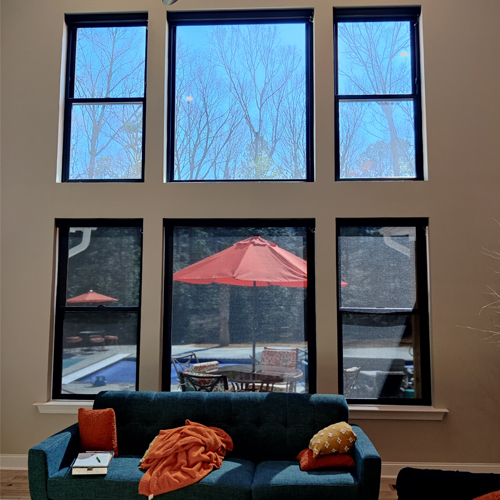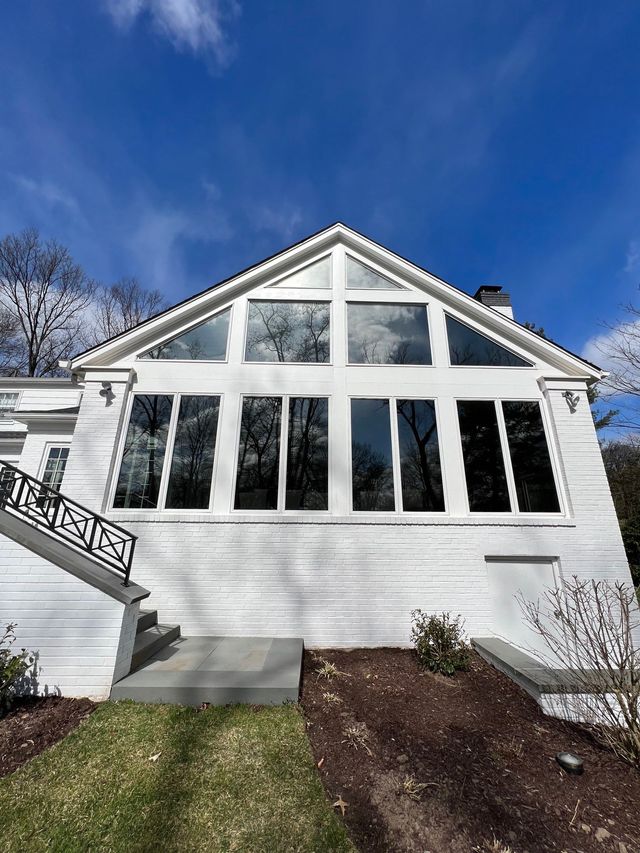Residential Window Tint: Shield Your Furniture from UV Damage
Residential Window Tint: Shield Your Furniture from UV Damage
Blog Article
How Residential Home Window Tinting Improves Your Home's Energy Effectiveness
Residential home window tinting offers an engaging solution for home owners seeking to enhance energy effectiveness within their living rooms. By applying specialized films to windows, it properly lowers heat transfer, consequently maintaining interior temperature levels and reducing the requirement for too much heating or cooling.
Comprehending Window Tinting
Comprehending window tinting is essential for property owners seeking to improve both comfort and power effectiveness in their home. Residential Window Tint. Home window tinting entails the application of a slim movie to the interior or exterior surface of glass windows. This film can considerably modulate the quantity of sunshine and warmth that gets in a home, hence affecting indoor climate conditions
There are various kinds of home window tinting films available, each with distinctive buildings. The efficiency of window tinting is often gauged by its Visible Light Transmission (VLT) portion, which shows exactly how much light can pass through the movie.
Benefits of Power Efficiency
Home window tinting not only improves aesthetics yet also plays a substantial role in boosting power effectiveness within residential areas. By reducing warm transfer through windows, colored films create a more secure interior environment, which can bring about substantial decreases in power intake for cooling and heating. This energy performance converts into lower energy bills, supplying property owners with significant long-term cost savings.

In addition, home window tinting enhances the convenience of living areas. By reducing glow and obstructing dangerous UV rays, tinted home windows develop an even more enjoyable setting, which can cause improved health for residents. The protection versus UV rays also aids protect furnishings and flooring from fading, contributing to the longevity of family items.
Just How Tinting Functions
Tinting films run through a mix of sophisticated products and modern technologies made to manage the quantity of solar energy getting in a home. Primarily composed of polyester, these movies typically incorporate ceramic or metal fragments that reflect and take in warmth. This twin ability permits them to substantially reduce the penetration of ultraviolet (UV) rays and infrared radiation while allowing noticeable light to travel through.
The efficiency of window tinting is gauged by its solar heat gain coefficient (SHGC), which suggests just how much solar power is transmitted through the home window. Reduced SHGC values are better as they denote higher warmth denial. Additionally, window colors can include a variety of shades, enabling home owners to tailor their aesthetic preferences while improving power performance.
Furthermore, these movies serve as read this post here a barrier, stopping warmth loss throughout cooler months by mirroring interior warmth back into the home. This thermal insulation impact matches the cooling benefits gotten throughout warmer months, adding to a well balanced interior climate year-round. By handling solar power successfully, residential window tinting not just enhances comfort but also plays an important role in decreasing power consumption and reducing utility expenses.
Selecting the Right Tint

There are various types of window movies readily available, consisting of colored, metalized, and ceramic. Ceramic movies provide outstanding warm control without endangering presence and are very sturdy, making them a popular choice.
Visible light transmission (VLT) is one more vital variable, as it shows the amount of all-natural light that can go through the colored glass. Home owners need to select a tint with a VLT that matches their illumination preferences while still offering sufficient glare reduction.
Furthermore, evaluating the solar warm gain coefficient (SHGC) can help identify how well a color can obstruct warmth from sunshine. A lower SHGC suggests better warmth control, ultimately boosting power effectiveness.
Setup and Upkeep Tips
Correct installment and upkeep are crucial parts in making try this site the most of the benefits of residential home window tinting. To accomplish optimum outcomes, it is recommended to work with a certified professional for setup. This makes sure that the tint is used correctly, staying clear of air bubbles, creases, or misalignment that might compromise efficiency. Professionals likewise use specialized methods and tools, which can improve the durability and performance of the tint.
Following installment, upkeep is important to extend the life of the window film. It is suggested to wait at least 30 days prior to cleaning up the colored home windows to permit the sticky to heal fully.
In addition, routine inspections are useful. Look for any kind of peeling or bubbling, which could indicate incorrect installment or put on over time - Residential Window Tint. Resolving these issues quickly can avoid further damage and maintain power efficiency. By adhering to these installation and maintenance pointers, homeowners can i thought about this guarantee their window tinting remains to supply considerable energy cost savings and comfort for years ahead.
Final Thought
In final thought, residential window tinting offers as an effective option for enhancing energy performance within homes. By reducing warm transfer and obstructing damaging UV rays, home window movies contribute to lower power intake and enhanced indoor convenience.
Home window tinting involves the application of a thin movie to the inside or outside surface of glass windows. By lowering heat transfer with home windows, colored movies create an extra steady interior environment, which can lead to substantial reductions in power intake for home heating and air conditioning.The efficiency of home window tinting is measured by its solar warm gain coefficient (SHGC), which suggests just how much solar energy is transmitted with the window. By taking care of solar power effectively, residential window tinting not only improves convenience however additionally plays an essential function in lowering power intake and lowering energy costs.
By reducing heat transfer and blocking damaging UV rays, home window films contribute to decrease energy intake and improved indoor convenience.
Report this page